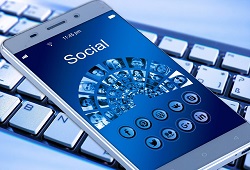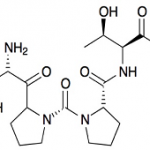How A 12-Step Recovery Program For Social Media Addiction Works

You can’t really run too much from computers, smartphones or the internet. This is kind of a big deal, especially for social media addicts. Let’s take a closer look at John, a typical case of social media addict. Just like millions of other addicts, he is trying to overcome his social media addiction by entering into a recovery program.
John begins his day by making his bed, preparing his breakfast and brewing coffee for him and his roommate. John tries to avoid using internet as much as possible. He only checks the weather forecast for the day and also looks at the bus schedules one more time to ensure his commute to the rehab center will have no delay.
In his search for a part-time job, John dedicates a lot of time polishing his resume, seeking for references, scanning job boards and reading articles on how to nail interviews. However, John is afraid that his search online will trigger his worst nightmare, which is to go on social media platforms. He used to spend the most part of the day reading social media posts and engaging with the content other users posted, so he doesn’t want to slip back into his old habits.
Fortunately, he is only allowed to use computers in the rehab facility, which have powerful firewalls and use certain time limits.
The difference between recovering from a standard addiction such as drinking or smoking, and recovering from social media or technology addiction, is huge. In the former case, specialists use abstinence-based programs. In the latter, they need to find a way to enable addicts to reintegrate parts of social media and technology into their lives.
Even if many of us believe that we have some kind of degree of addition to the screen, be it laptop, smartphone or tablet, experts and academics believe that social media addiction is something more.
Some believe this problem rises to the levels of a psychiatric condition. In the case of gaming addiction, some researchers believe that certain individuals’ behavior can fall into the category of psychiatric issues.
Just like John has experienced, many technology users have been literally “ruined” by social media or gaming. Their relationships ended in failure, they have lost their jobs, lost their credibility in society and even got on the brink of divorce. Some addicts almost got kicked out of the house by their parents.
Many addicts described terrifying scenes, of fights, yells and argues. They were just unable to get rid of the vicious circle they were entrapped in, which started with depression and continued with dopamine loops from their favorite activities, whether social media, gaming, forums or virtual interactions. The problem with this cycle is that it created even more isolation in the real world and deepened their feelings or depression and inadequacy.
After a period of 13 weeks in detox, John, as a social media addict who dropped school and lost over 30 pounds, finds himself in a second phase of the healing process, also known as stabilization. During this phase, his life is monitored by professionals. Even if he is less restricted as to what sites he is allowed to use or how much time he can spend online, John is still under close supervision.
In the text phase, which will happen in around 6 months up to one year, John’s restrictions will be fully removed, and he will have free access to browse the web. However, at that point, John will be cured by any technology addiction whatsoever. He will only use social media and play games during his free time, and only for specific purposes.
John’s second phase of recovery has managed to bring a whole new level of clarity in his life. He now uses the internet with a clearer focus and purpose in mind. He has also replaced his smartphone with an older model. The feeling of freedom he senses is unbelievable. He now sees the world around him and finally rejoices.
The good news is that Big Tech companies are now coming aware of the huge impact technology has on certain people, if not most of them. Facebook has released a new metric called “Time Well Spent”, where they monitor how much people are spending idle on Facebook. Google and Apple are also releasing their own digital health tools called Digital Wellbeing and Screen Time, which are designed to enable users to limit the time they spend on their smart devices.






